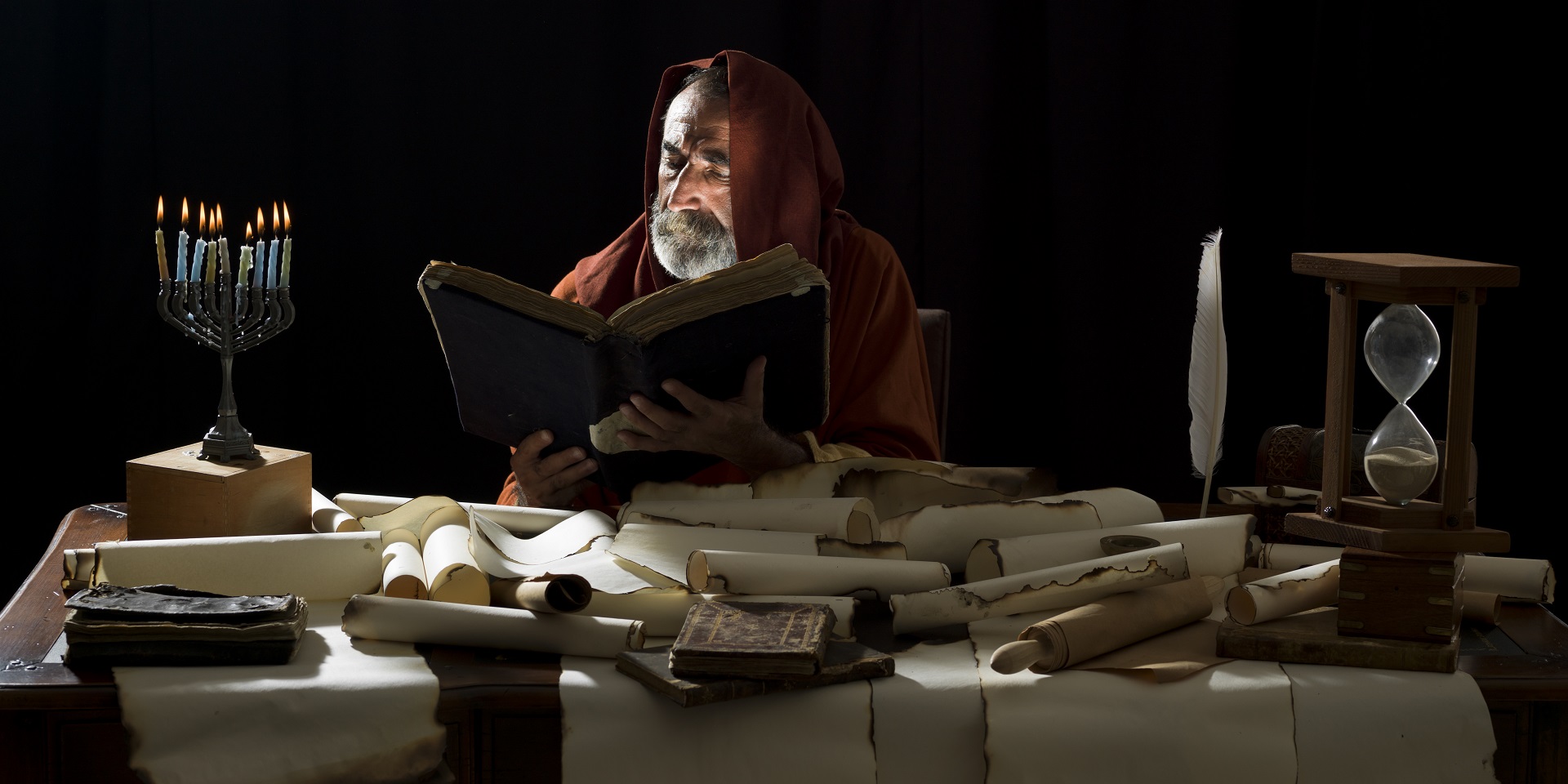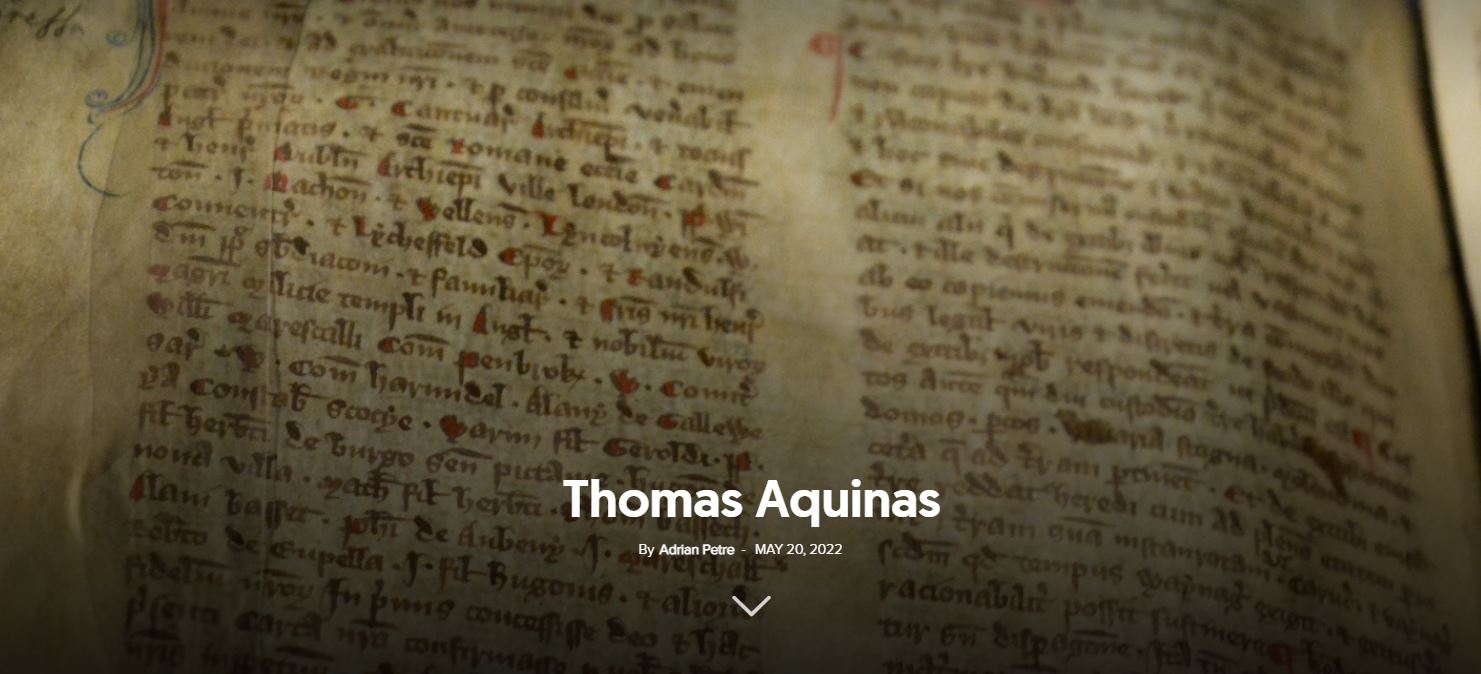Classmates nicknamed him “the dumb ox” because of his massive physique and quiet nature. But his brilliant mind and passion for study impressed the famous professor Albert the Great, who defended him: “When this Ox roars, the whole world will hear it.” He was talking about Thomas Aquinas.
Thomas Aquinas[1] (in Italian Tommaso d’Aquino) was born in 1225 near Naples, being the seventh son of Count Landulf from the great feudal house of Aquino. From childhood, he showed an alert and questioning mind. As a teenager, he was drawn to Aristotle’s logical treatises and voraciously read the various commentaries on the Greek philosopher’s writings. His works would provide a rational and systematised framework for supporting the Christian faith. He died at only 49 years old, on March 7, 1274.
Faith and reason
Since the twelfth century, the schools attached to the cathedrals had become the highest educational institutions. Along with theology, advanced students were taught the seven liberal arts: grammar, logic, rhetoric, arithmetic, music, geometry, and astronomy. Since the Aristotelian system had become popular again due to Arab scholars, teaching was done by logical argumentation and philosophical dialogue. This is what we call scholasticism.
Utilising the logical system of argumentation, Thomas Aquinas successfully used the fashionable philosophical current and transformed a potential enemy for theology into a reliable ally. Aquinas believed that reason and faith were two ways of discovering the truth that were by no means parallel, but convergent.
A first attempt to fructify the common philosophical ground of faith and reason was done through Summa contra Gentiles, an apologetic writing. Here Christianity is defended against Islam and Judaism, using the tools of logic. However, the work for which Thomas Aquinas went down in history is Summa Theologica.[2] It is a systematisation of the entire Christian theology and consists of about three thousand articles organised into three major parts.
The work is composed of more than 600 questions to which a pertinent answer is sought. For each issue under discussion, Thomas Aquinas presents the authority on the basis of which he will build the answer, after which he presents his thesis, and at the end he discusses the possible objections that could be brought to his argumentation.
In Summa Theologica, one finds the well-known theoretical construct about God made by Aquinas. He believed that the existence of Divinity is a logical necessity. Using Aristotelian argumentation, he asserts that God’s existence can be demonstrated because He is the primary cause (the motor force or “unmoved mover”, as Aristotle would say).
For Aquinas, divine attributes are logically “inferred” rather than affirmed on the basis of revelation. God exists by Himself and is therefore non-derivative and timeless. As a consequence, God is seen as being omniscient or omnipotent precisely because He is the (Supreme) Being par excellence—therefore the sum of all superlatives.
Despite the fact that the Summa Theologica is an unfinished work, it remains monumental in its created synthesis. This is exactly where the genius of Thomas Aquinas lies: without having the desire for absolute originality, he used everything that had been written up until his time and places it all in a coherent framework. Consistent with the scholastic didactic style, Thomas imposes a logical, well-structured system, which opens the way to what is known today as “systematic theology.”
In the shadow of Thomas
It should be noted that in 1879, Pope Leo XIII promulgated the encyclical Aeterni Patris, in which he recommended Thomism as a model for theological and philosophical studies. This is because the approach of Thomas Aquinas reduced the tension between reason and faith, being suitable for the environment of the time, which was dominated by science.
An important difficulty of the Thomist system is the meticulous preoccupation with creating a complete logical system. This purpose can easily lead to the formulation of forced theological conclusions.[3] This danger persists and is encountered in the case of all theologians concerned with systematics: from the desire to put the truth in a container (the system) one can end up remodelling or tweaking the truth to fit the system.
In the long run, the problem with this kind of approach is that a specific formulation of truth will collapse with the system inside of which it was conceived. As is the case with Thomist theology, contemporary theologies will be up-to-date and relevant as long as the systems and the philosophical currents on which they are built (be it existentialism, nihilism, materialism, or others) are considered valid.
It is known about Thomas Aquinas that while he was holding the liturgy on December 6, 1273, he had a mysterious experience, which some interpreted as a vision, and others as a stroke. One thing is certain: this experience put an end to his entire activity.
He never wrote or dictated anything again, and when his secretary urged him to continue his work on the Summa, he replied: “I cannot because everything I have written seems to me to be straw.” We do not know whether he saw the limits of his own approach, but one thing is certain: many thinkers had and still have to ruminate on Aquinas’s “straw.”




















